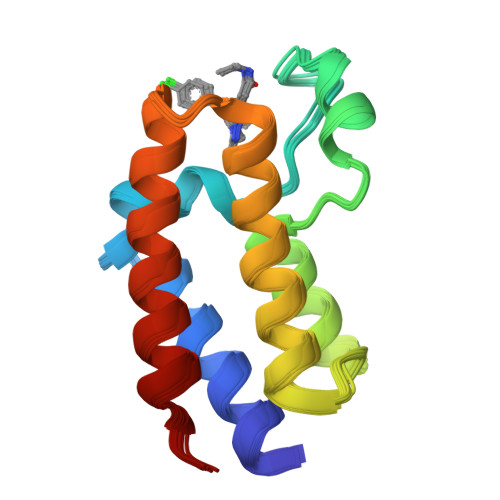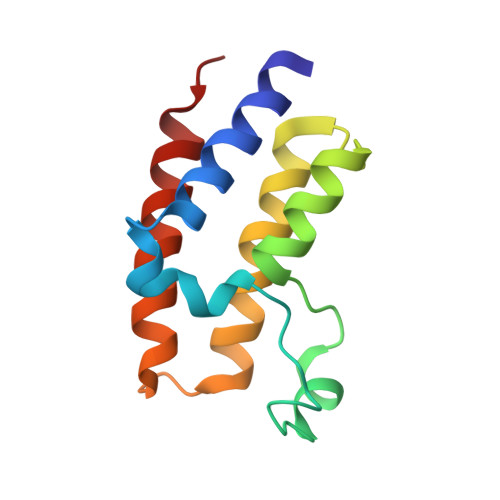NMR Molecular Replacement Provides New Insights into Binding Modes to Bromodomains of BRD4 and TRIM24.
Torres, F., Walser, R., Kaderli, J., Rossi, E., Bobby, R., Packer, M.J., Sarda, S., Walker, G., Hitchin, J.R., Milbradt, A.G., Orts, J.(2022) J Med Chem 65: 5565-5574
- PubMed: 35357834
- DOI: https://doi.org/10.1021/acs.jmedchem.1c01703
- Primary Citation of Related Structures:
7AQT, 7B9X - PubMed Abstract:
Structure-based drug discovery (SBDD) largely relies on structural information from X-ray crystallography because traditional NMR structure calculation methods are too time consuming to be aligned with typical drug discovery timelines. The recently developed NMR molecular replacement ( N MR 2 ) method dramatically reduces the time needed to generate ligand-protein complex structures using published structures (apo or holo) of the target protein and treating all observed NOEs as ambiguous restraints, bypassing the laborious process of obtaining sequence-specific resonance assignments for the protein target. We apply this method to two therapeutic targets, the bromodomain of TRIM24 and the second bromodomain of BRD4. We show that the N MR 2 methodology can guide SBDD by rationalizing the observed SAR. We also demonstrate that new types of restraints and selective methyl labeling have the potential to dramatically reduce "time to structure" and extend the method to targets beyond the reach of traditional NMR structure elucidation.
Organizational Affiliation:
Swiss Federal Institute of Technology, Laboratory of Physical Chemistry, HCI F217, Eidgenossische Technische Hochschule Zurich, Vladimir-Prelog-Weg 2, 8093 Zürich, Switzerland.

















